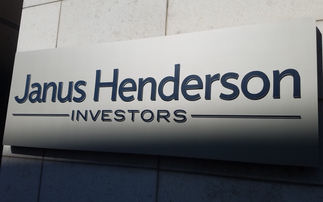
With the Japanese yen having recently been at its weakest level for around 60 years, and the US dollar looking overvalued, have we reached a turning point?
In 1971, Richard Nixon ended the general convertibility of dollars to gold. Since then, the prices of major currencies have floated freely, making currency movements—and currency risk—an unavoidable question for global investors.
Take the Japanese yen. Investors who bought the Japanese stockmarket index last March would be sitting on an excellent return of over 40%. But over the same period, the yen has fallen dramatically. So an American investor bringing that 40% gain back home into dollars would have seen their return almost halved. To us, that sort of result makes currency a risk worth managing.
US Dollar: Mispriced or fair value?
Just like stock prices, currency prices can move away from their fair value. Unlike stocks, currencies are a two-way trade. To buy one currency, we must sell another. And unlike stocks, we are not looking primarily for currencies we should buy, but for those we should sell. Currency mispricings can persist for a long time, so our starting point is to see which currencies appear over-valued, and then decide whether others would be better stores of value over the long run.
Today, the US dollar looks overvalued to us. As such, all of our global strategies have less dollar exposure than their benchmarks. The other side of this trade is where our cheap yen comes in. The yen has not just weakened over the last 18 months—when adjusted for inflation, the yen has been at its weakest level in over half a century.
For yen holders like us, the last few years have been particularly painful. A year ago, we wrote about the extreme cheapness of the yen, and it has been disheartening to see it sink to ever deeper depths.
Big Macs and wage gaps: A tale of two economies
Last year we showed how cheap the yen was using the Big Mac Index. McDonald's Big Macs are the same anywhere in the world, making them a good yardstick for the relative value of currencies. At the time, the Big Mac Index showed the yen was at a 40% discount to the US dollar.
But that only paints half the picture—the Big Mac is an output, and we can also look at inputs. The key input cost for the Big Mac is the wages paid to the workers who make the burgers. Here, the differences between the US and Japan are stark. If we look at wages of McDonald's workers in the US and Japan, we can see how untethered the exchange rate has become from economic reality.
Disclaimer
The contents of this communication have been approved for issue in the United Kingdom by Orbis Investments (U.K.) Limited which is authorised and regulated by the Financial Conduct Authority. Orbis Investments (U.K.) Limited and Orbis Investment Management Limited are members of the Orbis group of companies ("Orbis").
This communication does not constitute an offer, solicitation or recommendation to buy, sell or hold any interests, shares or other securities in the companies mentioned in it. Orbis has not considered the suitability of this investment against your individual needs and risk tolerance. You must not rely upon this communication or any part of it as investment advice and Orbis does not assume and will not accept responsibility or liability (whether arising in contract, tort, negligence or otherwise) for any error, omission, loss or damage (whether direct, indirect, consequential or otherwise) in connection with the information in this communication and disclaims any such liability to the maximum extent permitted by law. This communication represents Orbis' view at the date stated and may provide reasoning or rationale on why we bought or sold a particular security for a fund. We may take a different/the opposite view/position from that stated. This is because our view may change as facts or circumstances change. This communication has not been prepared in accordance with legal requirements designed to promote the independence of investment research. Entities and employees of Orbis are not subject to restrictions on dealing in relevant securities ahead of the dissemination of this review.
Past performance is not a reliable indicator of future results. When investing your capital is at risk.












